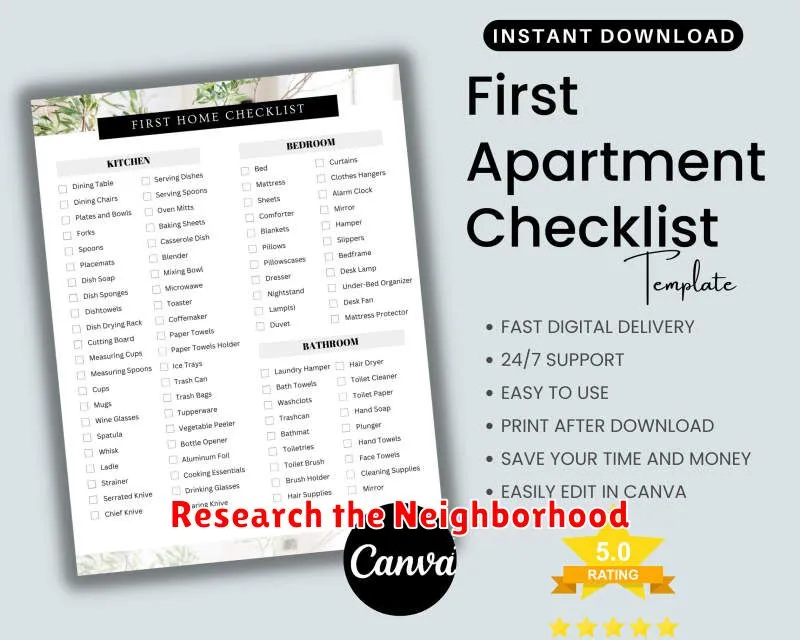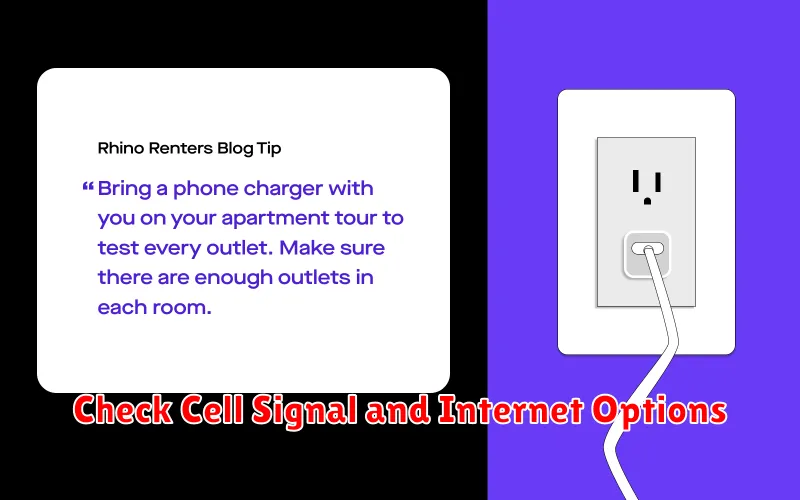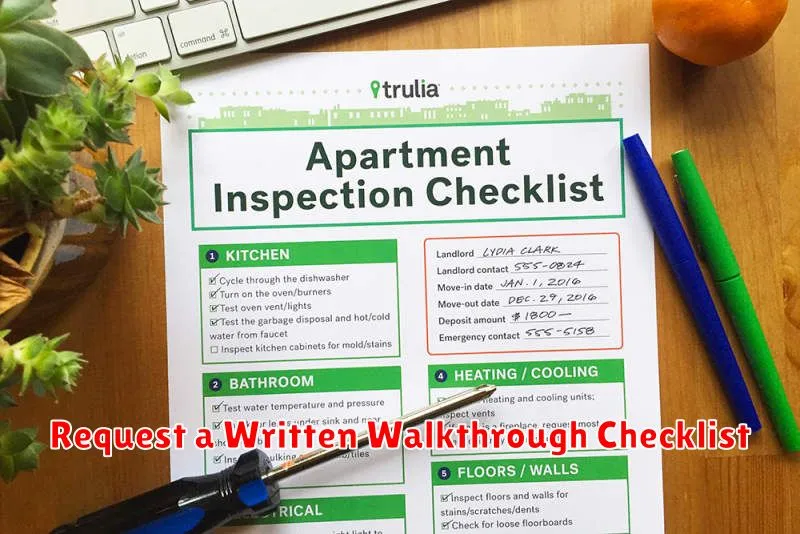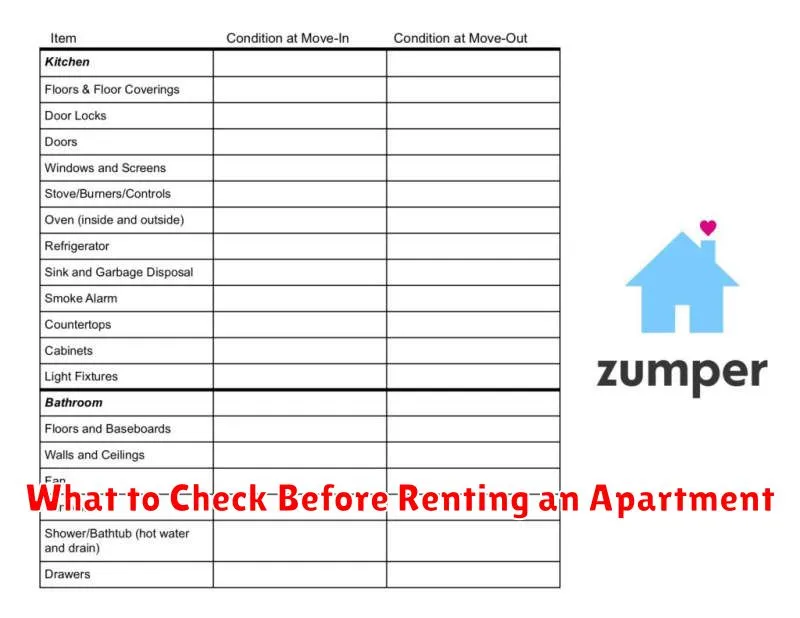Renting an apartment is a significant decision, requiring careful consideration of various factors to ensure a comfortable and suitable living environment. Before signing a lease, it’s crucial to conduct thorough research and ask the right questions. This proactive approach can help you avoid potential problems and ensure a positive renting experience. This article will guide you through the essential checklist of what to check before renting an apartment, covering everything from location and amenities to lease terms and safety features. Understanding these key elements will empower you to make an informed choice and find the perfect apartment that meets your needs and budget.
From evaluating the neighborhood and assessing the condition of the apartment to understanding your rights as a tenant, this guide covers all the essential aspects of pre-rental checks. We will delve into the importance of checking for pest infestations, verifying the functionality of appliances, and confirming the availability of parking. By addressing these critical factors upfront, you can avoid unpleasant surprises and secure a rental agreement that suits your lifestyle and preferences. Learn what questions to ask your potential landlord and what to look for during apartment viewings, empowering you to make a confident and informed decision in your apartment search.
Understand the Lease Terms Clearly
Before signing any lease agreement, it is crucial to thoroughly read and understand all the terms and conditions. Pay close attention to the length of the lease, the monthly rent amount, and the due date. Also, carefully review clauses related to late fees, maintenance responsibilities, and pet policies. Understanding these key elements will prevent future disputes and ensure a smooth tenancy.
In addition to the basic terms, scrutinize details regarding security deposits, including the amount required and the conditions for its return. Be sure to clarify any stipulations concerning property alterations, such as painting walls or installing fixtures. It’s also important to understand the renewal process, including any required notice periods and potential rent increases. Addressing these details upfront will protect your interests and provide clarity throughout the lease term.
Finally, don’t hesitate to ask questions if anything is unclear. It is perfectly acceptable to seek clarification from the landlord or property manager regarding any aspect of the lease agreement. If necessary, consult with a legal professional to ensure you fully comprehend all the terms and conditions before signing. Taking these proactive steps will help establish a positive landlord-tenant relationship and prevent future misunderstandings.
Inspect Plumbing, Electricity, and Appliances
Plumbing inspections should focus on checking for leaks, proper drainage, and adequate water pressure. Inspect pipes for corrosion or damage, paying close attention to areas under sinks and around toilets. Ensure faucets and showerheads are functioning correctly and check for signs of mold or mildew, which can indicate hidden moisture problems. It is also important to test the water heater for proper temperature and pressure relief valve operation.
Electrical system inspections should prioritize safety. Check outlets and switches for proper grounding and functionality. Inspect the electrical panel for any signs of overheating, loose connections, or corrosion. Ensure all wiring is properly insulated and secured. It’s important to check for the presence of Ground Fault Circuit Interrupters (GFCIs) in bathrooms and kitchens. Test smoke and carbon monoxide detectors to ensure they are working correctly.
Appliances require individual inspection. For major appliances like refrigerators, ovens, dishwashers, and washing machines, verify proper operation. Check for any leaks, unusual noises, or signs of malfunction. Inspecting the appliance’s connections and ensuring proper ventilation are also crucial. For smaller appliances, examine cords for damage and test functionality to confirm they are in working order.
Research the Neighborhood

Thorough neighborhood research is crucial when considering a move. Factors such as safety, schools, and local amenities greatly impact quality of life. Consider proximity to work, access to public transportation, and the availability of essential services like grocery stores and healthcare facilities. Evaluating these elements helps determine if a neighborhood aligns with your lifestyle and needs.
Understanding the community’s character is also important. Researching local events, community groups, and the general demographics can provide valuable insights. This information helps paint a picture of the neighborhood’s atmosphere and whether it’s a place you would feel comfortable and at home.
Finally, consider the financial aspects. Research property values, property taxes, and the overall cost of living in the area. This financial due diligence is essential to ensure the neighborhood aligns with your budget and long-term financial goals.
Verify Security Features and Locks
Regularly inspect all security features of your property, including doors, windows, locks, and alarm systems. Ensure that doors and windows are properly secured with strong locks and that frames are in good condition. Check for any signs of tampering or damage and address them promptly. Functionality is key; test all locks and security systems to confirm they are working as intended.
Reinforce vulnerable areas. Consider adding deadbolt locks to exterior doors and window reinforcements to deter forced entry. Sliding glass doors can be secured with vertical bolts or security bars. For added security, explore options like security film for windows, which makes them more resistant to shattering.
Maintain a key control system. Be mindful of who has access to keys and change locks when necessary, such as after a move or if keys are lost or stolen. Avoid hiding keys in obvious locations. Consider a secure key storage solution or a keypad entry system for enhanced control.
Ask About Maintenance Policies
Before renting an apartment, it’s crucial to understand the maintenance policies. Inquire about how repairs are handled, specifically who is responsible for what. For example, are you expected to handle minor repairs yourself, or is there an on-site maintenance team? Find out the typical response time for maintenance requests and how to submit them. Knowing this information upfront can save you headaches and potential disputes down the line.
Clearly understand the procedures for emergency repairs. Ask who to contact if there’s a plumbing leak, electrical issue, or other urgent problem outside of normal business hours. A reliable emergency contact and a clear process are essential for your safety and peace of mind.
Also, ask about preventative maintenance schedules. Inquire about regular inspections for pest control, HVAC system checks, and other routine maintenance. Knowing these schedules can help you prepare and minimize disruption to your daily life.
Check Cell Signal and Internet Options

First, check your cell signal strength. A weak signal can significantly impact your internet connection speed and reliability. Look for the signal strength indicator on your phone, which is typically represented by bars or dots. If you have a weak or no signal, try moving to a different location, preferably outdoors or near a window. Restarting your phone can also sometimes resolve connectivity issues related to a weak signal.
Next, verify your mobile data connection is active. Ensure that mobile data is enabled in your phone’s settings. If it is enabled but you’re still experiencing issues, try toggling it off and on again. Check if you have exceeded your data limit for the month. If you have, consider purchasing additional data or waiting until your next billing cycle. Also, confirm that you are using the correct Access Point Name (APN) settings for your carrier. These settings determine how your device connects to the mobile network. Contact your carrier for the correct APN settings if needed.
If you still can’t connect to the internet, consider alternative internet options. If available, try connecting to a Wi-Fi network. Look for available networks in your phone’s Wi-Fi settings and enter the password if required. If you’re in a public space, be mindful of security risks when connecting to public Wi-Fi. Using a personal hotspot from another device is another option. Be aware that using a hotspot may consume data from the other device’s plan.
Assess Parking and Transportation
Parking availability and accessibility are crucial factors to consider. Assess the number of parking spaces available, their proximity to the building, and whether they accommodate individuals with disabilities. Also, consider the cost of parking, whether it’s free, paid, or validated, and if alternative transportation options reduce parking demand.
Evaluate the transportation options available to reach the location. This includes access to public transportation such as buses, trains, and subways, as well as ride-sharing services and bicycle infrastructure. Proximity to major highways and airports should also be taken into account. Convenient transportation can greatly influence accessibility and reduce reliance on personal vehicles.
Finally, analyze potential traffic congestion and travel times during peak hours. Consider the impact of rush hour traffic on commuting times and accessibility. Understanding traffic patterns can help predict potential delays and inform transportation decisions.
Speak With Current Tenants if Possible
Speaking with current tenants can provide invaluable insight into what it’s really like to live in a specific building or complex. They can offer honest perspectives on aspects like landlord responsiveness, maintenance quality, noise levels, and the overall community atmosphere. This information can be crucial in deciding if the property is the right fit for you.
If you have the opportunity, try to approach current tenants respectfully and ask a few key questions. Inquiries about the frequency of repairs, heating and cooling effectiveness, and general satisfaction with management can be particularly helpful. Remember that their experiences are subjective, but gathering multiple perspectives can paint a clearer picture.
Don’t be afraid to ask about things that are important to your lifestyle. If you work from home, inquire about internet reliability. If you have pets, ask about pet policies and the general pet-friendliness of the building. This direct communication can help you make a well-informed decision and potentially avoid future problems.
Know the Move-In Costs and Deposits
Before signing a lease, it’s crucial to understand all move-in costs. These expenses go beyond just the first month’s rent. Be prepared for additional charges like a security deposit, which protects the landlord against potential damages, and is usually equivalent to one or two months’ rent. You might also encounter other fees, such as application fees, pet deposits, or administrative fees. Understanding these costs upfront helps you budget effectively and avoid surprises.
Security deposits are typically refundable at the end of your lease, provided you leave the property in good condition, as outlined in your lease agreement. Application fees, however, are generally non-refundable, even if you’re not approved for the rental. Make sure to get a clear explanation of all potential charges and their refund policies before committing to a lease. Request a written breakdown of all anticipated move-in costs.
Creating a moving budget is a smart move. Factor in all expected expenses, including moving truck rentals, packing supplies, and the potential for utility connection fees. Having a clear budget helps you anticipate and manage the financial aspect of your move, ensuring a smoother transition into your new home.
Request a Written Walkthrough Checklist

Requesting a written walkthrough checklist is a crucial step in ensuring a smooth and efficient handover of responsibilities or processes. This documented guide provides a step-by-step outline of tasks, procedures, and key information necessary for successful completion. A well-crafted checklist helps reduce errors, improve understanding, and maintain consistency, especially for complex or multi-stage operations. It serves as a valuable reference for both the individual performing the walkthrough and the one receiving the information.
When requesting a written walkthrough checklist, be specific about the scope and purpose of the document. Clearly define the area, task, or process that the checklist will cover. Identify the target audience and their level of expertise. Consider the desired outcome of the walkthrough and any relevant regulations or compliance requirements. Communicating these details upfront ensures the checklist is tailored to your needs and provides the necessary level of detail.
To facilitate the creation of a comprehensive checklist, consider the following key elements: a clear title and objective, sequentially numbered steps, concise descriptions of each step, space for notes and observations, designated areas for signatures and dates, and version control information to track revisions. By including these elements, you ensure the checklist remains a valuable and up-to-date resource.

